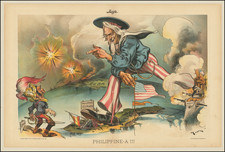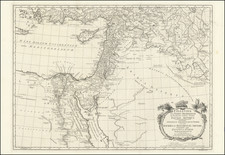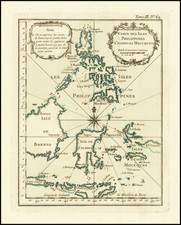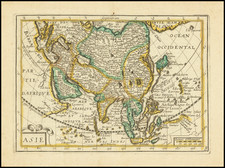A fine example of the rare first edition of De Jode's map of Asia, which was both separately issued and included in his Speculum Orbis Terrae.
The map shows one of the earliset obtainable depictions of the Philippines, which are note yet collectively named, although many individual islands are named, pre-dating Ortelius's map of China (1584) and Kaerius's map of the Philippines (1598).
Singapore is Cinapura. There is no sign of Korea and the shape of Japan is quite unusual. Teh Straits of Anian separate America from Asia, with a wide open Northeast Passage extending toward the Mare Cronium quod Amachium vocant.
This map of Asia is particularly rare because it appears only as a separately published map and in the very rare first edition of the Speculum. De Jode describes this map as new, as he extended the map westward from Ortelius' delineation to include Persia and Arabia. This is one of the earliest works to delineate the Northwest Coast of America.
The map was engraved by Joannes and Lucas Van Deutecum.
Gerard De Jode was a contemporary of Abraham Ortelius. His Speculum Orbis did not enjoy the same commercial success as Ortelius, making his maps very scarce and highly desireable.
Gerard De Jode (1509-1591) was a pre-eminent mapmaker in the late seventeenth century, a time when the Dutch dominated the map trade. He was known for his many maps, some of which featured in Speculum Orbis Terrae (first edition Antwerp: 1578). Although never as successful as Ortelius’ Theatrum, the Speculum did get republished in a second edition in 1593, two years after De Jode’s death, by Arnold Coninx, and included this map. After his death, Gerard’s son, Cornelis (1568-1600), and his wife, Paschina, ran the shop. Unfortunately, Cornelis died young in 1600, aged only 32, and the stock and plates were sold to the publisher Joan Baptista Vrients.










![[Asia] (Title in Greek-Turkish Hybrid)](https://storage.googleapis.com/raremaps/img/small/41721.jpg)

![[Manila]. Die Befestigung der Hauptstadt Manila (Philippinen)](https://storage.googleapis.com/raremaps/img/small/86077.jpg)

